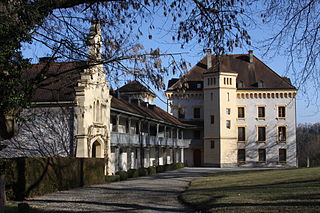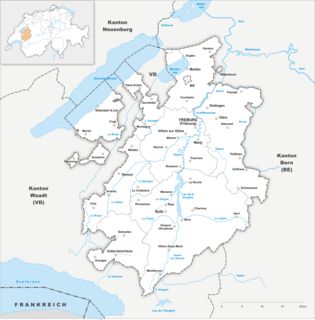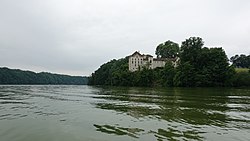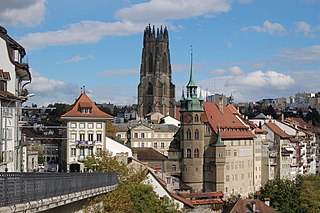
Fribourg or Freiburg is the capital of the Swiss canton of Fribourg and the district La Sarine. It is located on both sides of the river Saane/Sarine, on the Swiss Plateau, and is a major economic, administrative and educational center on the cultural border between German and French Switzerland (Romandy). Its Old City, one of the best-maintained in Switzerland, sits on a small rocky hill above the valley of the Sarine.

The canton of Bern or Berne is the second largest of the 26 Swiss cantons by both surface area and population. Located in west-central Switzerland, it borders the canton of Jura and the canton of Solothurn to the north. To the west lie the canton of Neuchâtel, the canton of Fribourg and canton of Vaud. To the south lies the canton of Valais. East of the canton of Bern lie the cantons of Uri, Nidwalden, Obwalden, Lucerne and Aargau.

Romandy is the French-speaking part of western Switzerland. In 2018, about 2.1 million people, or 25.1% of the Swiss population, lived in Romandy. The bulk of the romand population lives in the Arc Lémanique region along Lake Geneva, connecting Geneva, Vaud and the Lower Valais.

Romont is a municipality and capital of the district of Glâne in the canton of Fribourg in Switzerland.
See or Lac District is one of the seven districts of the canton of Fribourg in Switzerland. Lying to the north of the canton, the district is bilingual (French/German). Its territory enclaves the two Bernese municipalities of Münchenwiler and Clavaleyres, while its own village of Wallenbuch is exclaved within Bern. It has a population of 36,314.

The Castle of Gruyères, located in the medieval town of Gruyères, Fribourg, is one of the most famous in Switzerland. It is a Swiss heritage site of national significance.
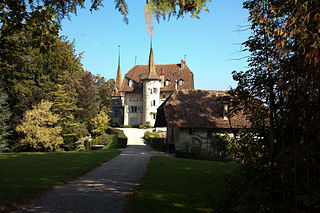
Grand-Vivy Castle is a castle in the former municipality of Barberêche in the Canton of Fribourg in Switzerland. It is a Swiss Heritage Site of National Significance.

Petit-Vivy Castle is a castle in the former municipality of Barberêche in the Canton of Fribourg in Switzerland. It is a Swiss Heritage Site of National Significance.

Lucens Castle is a castle in the municipality of Lucens in the canton of Vaud in Switzerland. It is a Swiss heritage site of national significance.

Baillival Castle (Bulle) is a bailiff's castle in the municipality of Bulle of the Canton of Fribourg in Switzerland. It is a Swiss heritage site of national significance.

Poya Castle is a castle in the municipality of Fribourg of the Canton of Fribourg in Switzerland. It is a Swiss heritage site of national significance.
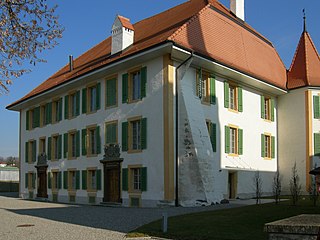
Mézières Castle is a castle in the municipality of Mézières of the Canton of Fribourg in Switzerland. It is a Swiss heritage site of national significance.

Baillival Castle (Surpierre) is a bailiff's castle in the municipality of Surpierre of the Canton of Fribourg in Switzerland. It is a Swiss heritage site of national significance.

Schwarzenburg Castle is a castle in the municipality of Schwarzenburg of the Canton of Bern in Switzerland. It is a Swiss heritage site of national significance.

Oberer Mannenberg Castle is a ruined castle in the municipality of Zweisimmen of the canton of Bern in Switzerland. It is a Swiss heritage site of national significance.
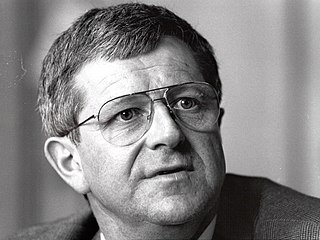
Anton Cottier was a Swiss politician with the Christian Democratic People's Party of Switzerland (CVP).
The Architecture of Switzerland was influenced by its location astride major trade routes, along with diverse architectural traditions of the four national languages. Romans and later Italians brought their monumental and vernacular architecture north over the Alps, meeting the Germanic and German styles coming south and French influences coming east. Additionally Swiss mercenary service brought architectural elements from other lands back to Switzerland. All the major styles including Roman, Romanesque, Gothic, Renaissance, Baroque, Neoclassical, Art Nouveau, Modern architecture and Post Modern are well represented throughout the country. The founding of the Congrès International d'Architecture Moderne in La Sarraz, Switzerland and the work of Swiss-born Modern architects such as Le Corbusier helped spread Modern architecture throughout the world.
